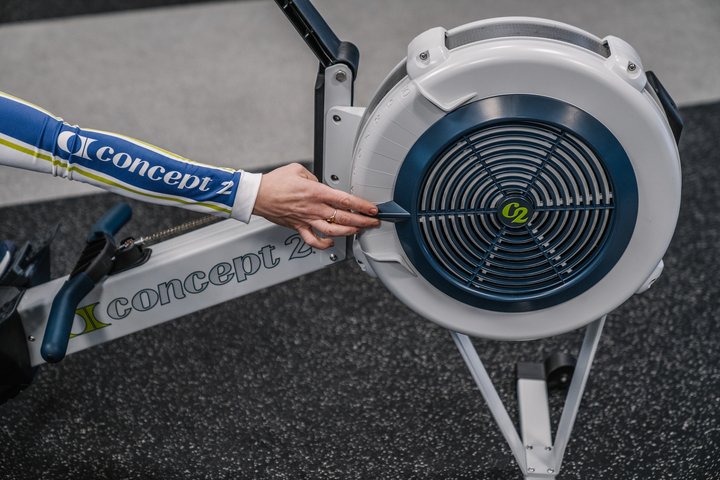Debunking the Myths: Damper Setting, Stroke Rate and Intensity

Myth: A damper setting of 10 will give you the best workout.
Reality: A damper setting of 3–5 is likely to give you the best workout. Too often, we see indoor rowers set at 10, because the athlete thinks that a higher number must be more challenging (or will reward them with a better time). The real challenge is to accelerate the flywheel at a lower damper setting, where power must be applied such as in a sleek, fast, rowing shell. A damper setting of 10 is more like a slow heavy rowboat—still a workout, but more about strength than cardiovascular fitness. Keep in mind: the best rowers in the world who compete at the Olympics, do not row competitively at a 10! Emulate them; aim for 3 to 5.
Try this: Row 100 metres at different damper settings: 1, 3, 5, 7, and 9. Keep your stroke rating at a 24. What feels differently? Which damper setting gave you the best time? Keep in mind, you still may want to change the damper setting for longer workouts. See more on damper setting.
Myth: The higher the stroke rate, the better the workout.
Reality: It’s not how high your cadence is, it’s how hard you’re pulling. Traveling up and down the monorail quickly without generating power is called “spinning your wheels.” You create power when the flywheel—not you—spins faster, which means a better workout. Rather than worrying about how quickly you can move up and back on the monorail, take the time to focus on getting as much power into each drive as you can. To focus on this power, think of rowing with a ratio of 1 beat for every 2 beats you travel up the slide. A good target stroke rate (measured as “strokes per minute” or spm) for most workouts will be in the range of 24–30 spm.
Try this: Start rowing at a high stroke rating (such as 28–30 spm) and note your pace per 500m. Every minute, reduce your stroke rate by two beats (30, 28, 26, etc.) and try to keep the same pace. This will challenge you to generate power at low stroke rates. If you can maintain this efficiency, your overall pace should improve.
Myth: The indoor rower is too easy for me.
Reality: On the indoor rower, intensity is created by the user. The harder you row, the more wind resistance is generated, and the more resistance you feel. It’s just like in a boat where the harder you pull and the faster the boat moves, the more drag resistance is created by the water on the hull of the boat. In either case, if it feels too easy, it’s because you aren’t rowing hard enough. This is common when one first tries the indoor rower; it may take a few sessions to master the technique and get to the point where you can effectively use your legs, core and arms to accelerate the flywheel. This user-controlled intensity is what makes the indoor rower so versatile—it can be used by everyone from rehab patients to Olympic athletes. And it can be used for all types of workouts, from long slow distance to short intense intervals.
Try this: Focus on using your legs, core and arms to accelerate the flywheel. Try to row your weight in watts. Maintain these watts even at different stroke rates. This tests your ability to increase intensity. Also check out our video on Rowing with Greater Intensity.
